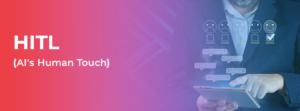Why Quality Matters in AI Training Datasets for Neuromonitoring
The world of medicine witnessed a substantial change with the incorporation of AI in neuromonitoring while also maintaining high standards of achieving accuracy and efficiency in caretaker tasks. It is significant for bioengineers, data scientists and medical researchers to comprehend the part that AI plays as well as the importance of reliable training datasets. The purpose of this article is to delve deeper into the significance of AI within the field of neuromonitoring, while also emphasizing the need of improving datasets within the AI revolution. Expect insights into sourcing and creating these datasets as well as real world examples and future trends that showcase the promising horizons of AI in neuromonitoring.
AI Integration into Neuromonitoring
To assist in patient management AI is also augmenting neuromonitoring with automated algorithms which have the ability to evaluate complex neural signals. In this case, These algorithms assist in monitoring the patient’s status in real time, predicting complications that may occur, and improving the surgical result as a whole. Technologies of this kind allow physicians to make more accurate decisions thus optimizing patient care. If bioengineers and data scientists understand AI for neuromonitoring better, there will be more possible ways for them to innovate and conduct research.
AI’s true potential comes from its capability to analyze enormous amounts of data in a very short duration. Insights that were elusive once can get unlocked. In the case of neuromonitoring, it leads to better interpretation of data timely which aids in management of neurological disorders. In all this transformation, bioengineers and medical researchers are on these advancements and improving patient outcomes.
AI’s role is definitely not limited to just data analysis in neuromonitoring. It also encompasses risk assessment analyses as well as precision medicine, which ensures appropriate therapy for every patient. This level of customization would be possible only when bioengineers join forces with data analysts, and medical researchers to make the best use of AI in physiotherapy focusing on a patient centered approach.
The Significance of High-Quality Training Datasets
High-quality training datasets form the core of AI in neuromonitoring. They allow AI models the capacity to learn, evolve and forecast accurately for the benefit of enhancing patient care. The absence of trusted datasets would invariably inhibit AI models from functioning optimally yielding poor results.
High precision and exceptional quality across datasets allows the AI algorithms to be interlocked with adequate information to differentiate between a normal and an abnormal neural signal which contributes to timely and accurate diagnoses. Such datasets are crucial in building strong AI models which are transferrable across medical applications and thus providing best possible patient care.
The importance of having quality training datasets also applies to regulations and ethical aspects. A model should be unbiased, accurate and reasonable and in order to do that, it has to take into account all relevant datasets so as to not be biased. Maintaining this requirement in focus allows the confidence in AI powered neuromonitoring to be stable.
Issues in Allotting Training Datasets
Bioengineers, data scientists, and medical researchers face several problems while sourcing high-quality datasets for AI in neuromonitoring, including data confidentiality issues, scarcity of labeled data, and the high dimensionality of neural data.
Regulations such as HIPAA and GDPR, for example, tend to limit the use of patient information, which makes it harder for researchers to source the specified datasets. Enforcing ethical Ai brings about challenges particularly in ensuring access to datasets while maintaining the privacy of the patients and this requires ideologies to cross pollinate across several sectors.
Another obstacle in training AI models is a lack of labeled datasets, as it is worth noting that any ML model focuses on working with labels to inform decisions. The labeling of neural data is also a problem due to the time-continuing process of manually annotating the relevant information. We must solve this problem by developing automatic labelling techniques and establishing collaboration with clinical centers.
Neural data’s complexity makes it exceedingly more difficult to obtain meaningful datasets. Variability in a patient’s disease and variability between patients in how the data is collected can result in aliased samples, which negatively affects model performance. An integrated solution can address these issues by incorporating a protocol for collecting the data in a uniform manner and involving multiple specialists in the area.
Practices That One Should Follow When Making and Finding AI Training Datasets For AI Training Datasets In Neuromonitoring And Even Creating Them

To reliably create, or more accurately source and create, freely available IP training sets for AI in neuromonitoring, we need to take into account a number of do’s and don’ts. The requirement for parameters that allow machine labeling of sets and the need for diversity in data sources represent key steps.
By including a variety of ethos of patients and their medical issues and the manner in which data were collected, AI models are expected to be comprehensive. In order to attain diversity and meaning in sampling strategies, reach out to several IT institutions and capitalize on GP data sets.
There is a considerable reduction in the time and cost involved in developing labeled datasets via automated labeling methods. Natural language processing tools coupled with machine learning tools can automate the annotation process allowing scholars to get adequate data to aid AI initiatives.
Working together to access better datasets is vital. Collaborating with medical companies, research centers and data technology companies will help in obtaining large data sets and assist in the sharing of datasets. They can join forces and deal with challenges in data sourcing and help to advance the field of AI based neuro monitoring.
Case Studies
Practical cases substantiate the positive application of the AI methods in the area of neuromonitoring and the importance of the training datasets. These case studies, in particular, emphasize the infusion of AI into the care of patients and what data can achieve in theorization level.
One of the studies focused on the development of an AI model that determines when a seizure would occur using neural signals obtained from a wide range of patients. The model was helpful in improving the wellbeing of the patients as it reduced complications during treatment as it enabled timely treatment interventions.
Another instance is the aforementioned of the use of AI by doctors in the observation of the brain signals in the theatre. Such AI models based on high-quality data are able to assist surgeons by providing them with feedback and thus optimizing the brain the brain damage risk and increasing the efficacy of the operation.
These case studies strengthen the case for reliable datasets in neuromonitoring using Artificial Intelligence. Good quality datasets aid bioengineering, data science, and medical sciences, bringing the development closer to the innovation and improvement of patient care and outcomes.
Emerging Trends and Innovations
The AI in neuromonitoring areas has a future vision that most would agree is limitless as far as remarkable developments go. New and exciting technologies such as AI are advancing, and their outlook is sure to change how researchers approach neuromonitoring, creating new opportunities for bioengineers, data scientists, and medical researchers.
One of these important mentions would be the inclusion of AI in already existent and relevant technologies like wearables and the IoT in the future. This integration will help in the constant check of the brain activity of a patient while being able to assist them in real time and assist neurologists with tailored treatment plans.
An additional mention would be the creation of these tools as an AI neurological disease predicting and preventing ones which is quite promising as well. Having large datasets allow these tools to find patterns and trends that interrupt potential movements, allowing for a proactive approach to patient care.
On such innovations, the role of datasets is paramount. Advanced generative models in Artificial Intelligence for the stimulation of complex neuromonitoring tasks will not advance further without high-quality training datasets.
Conclusion
To sum up, one of the critical factors for the future of AI in neuromonitoring is the availability of high-quality training datasets. These high-quality datasets allow the training of effective and precise AI algorithms which help in better management and outcome of the patients. Bioengineers, data scientists, and medical practitioners should be sourcing high-quality datasets and working as a team to address issues of data sourcing.
From there, researchers can identify and implement the best approaches for AI-enhanced neuromonitoring to promote innovation in the field. Together, we can improve the volume and quality of datasets which will help us envision better days for medical research and bioengineering.
You Might Like
February 28, 2025
Project EKA – Driving the Future of AI in India
Artificial Intelligence (AI) has long been heralded as the driving force behind global technological revolutions. But what happens when AI isn’t tailored to the needs of its diverse users? Project EKA is answering that question in India. This groundbreaking initiative aims to redefine the AI landscape, bridging the gap between India’s cultural, linguistic, and socio-economic […]
March 24, 2025
Natural Language Generation (NLG): The Future of AI-Powered Text
The ability to generate human-like text from data is not just a sci-fi dream—it’s the backbone of many tools we use today, from chatbots to automated reporting systems. This revolution in artificial intelligence has a name: Natural Language Generation (NLG). If you’re an AI enthusiast or a tech professional, understanding NLG is essential for keeping […]
March 24, 2025
HITL (Human-in-the-Loop): A Comprehensive Guide to AI’s Human Touch
The integration of Artificial Intelligence (AI) in various industries has revolutionized how businesses operate. However, AI is not infallible, and many applications still require human intervention to enhance accuracy, efficiency, and reliability. This is where the concept of Human-in-the-Loop (HITL) becomes essential. HITL is an AI training and decision-making approach where humans are actively involved […]
March 7, 2025
Data Annotation – And How Can It Build Better AI in 2025
In the world of digitalized artificial intelligence (AI) and machine learning (ML), data is the core base of innovation. However, raw data alone is not sufficient to train accurate AI models. That’s why data annotations comes forward to resolve this. It is a fundamental process that helps machines to understand and interpret real-world data. By […]


 Previous Blog
Previous Blog







